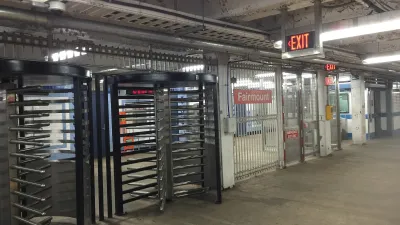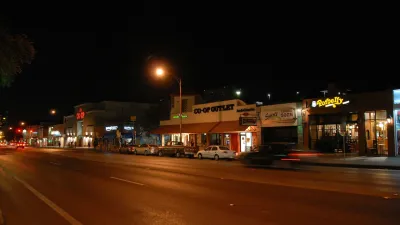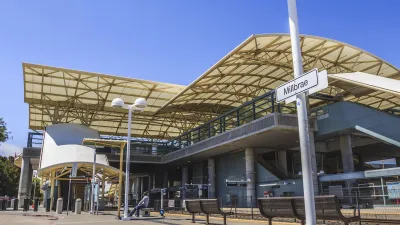With a history of paltry funding, decaying infrastructure and soaring demand, the state of public transit in the United States is "perilous."
"Despite deteriorating infrastructure, commuters keep jumping aboard. Since 1995, public transit ridership has risen a whopping 32 percent, more than double the rate of population growth. In 2007, Americans took 10.3 billion trips on public transportation, the highest number in more than 50 years. The trajectory continued in 2008: Subways, buses, commuter rail and light-rail systems saw a 6.5 percent jump in ridership in the year's third quarter, the largest quarterly upsurge in 25 years.
With transit booming, many Americans are ditching their once-beloved cars. The Federal Highway Administration reports 13 consecutive months of driving decline, with 112 billion less vehicle-miles traveled than in the previous 13-month span.
Yet the federal government remains in a time warp, prioritizing highway funding even as Americans ditch their cars for seats on trains and buses. This year presents two enormous opportunities to alter the equation: First, the economic recovery package, which will include billions on transit infrastructure, and second, the reauthorization of the surface transportation bill, which could redistribute federal funds."
FULL STORY: The Future of Transit

Trump Administration Could Effectively End Housing Voucher Program
Federal officials are eyeing major cuts to the Section 8 program that helps millions of low-income households pay rent.

Planetizen Federal Action Tracker
A weekly monitor of how Trump’s orders and actions are impacting planners and planning in America.

Ken Jennings Launches Transit Web Series
The Jeopardy champ wants you to ride public transit.

Washington Legislature Passes Rent Increase Cap
A bill that caps rent increases at 7 percent plus inflation is headed to the governor’s desk.

From Planning to Action: How LA County Is Rethinking Climate Resilience
Chief Sustainability Officer Rita Kampalath outlines the County’s shift from planning to implementation in its climate resilience efforts, emphasizing cross-departmental coordination, updated recovery strategies, and the need for flexible funding.

New Mexico Aging Department Commits to Helping Seniors Age ‘In Place’ and ‘Autonomously’ in New Draft Plan
As New Mexico’s population of seniors continues to grow, the state’s aging department is proposing expanded initiatives to help seniors maintain their autonomy while also supporting family caregivers.
Urban Design for Planners 1: Software Tools
This six-course series explores essential urban design concepts using open source software and equips planners with the tools they need to participate fully in the urban design process.
Planning for Universal Design
Learn the tools for implementing Universal Design in planning regulations.
Heyer Gruel & Associates PA
Ada County Highway District
Institute for Housing and Urban Development Studies (IHS)
City of Grandview
Harvard GSD Executive Education
Toledo-Lucas County Plan Commissions
Salt Lake City
NYU Wagner Graduate School of Public Service





























